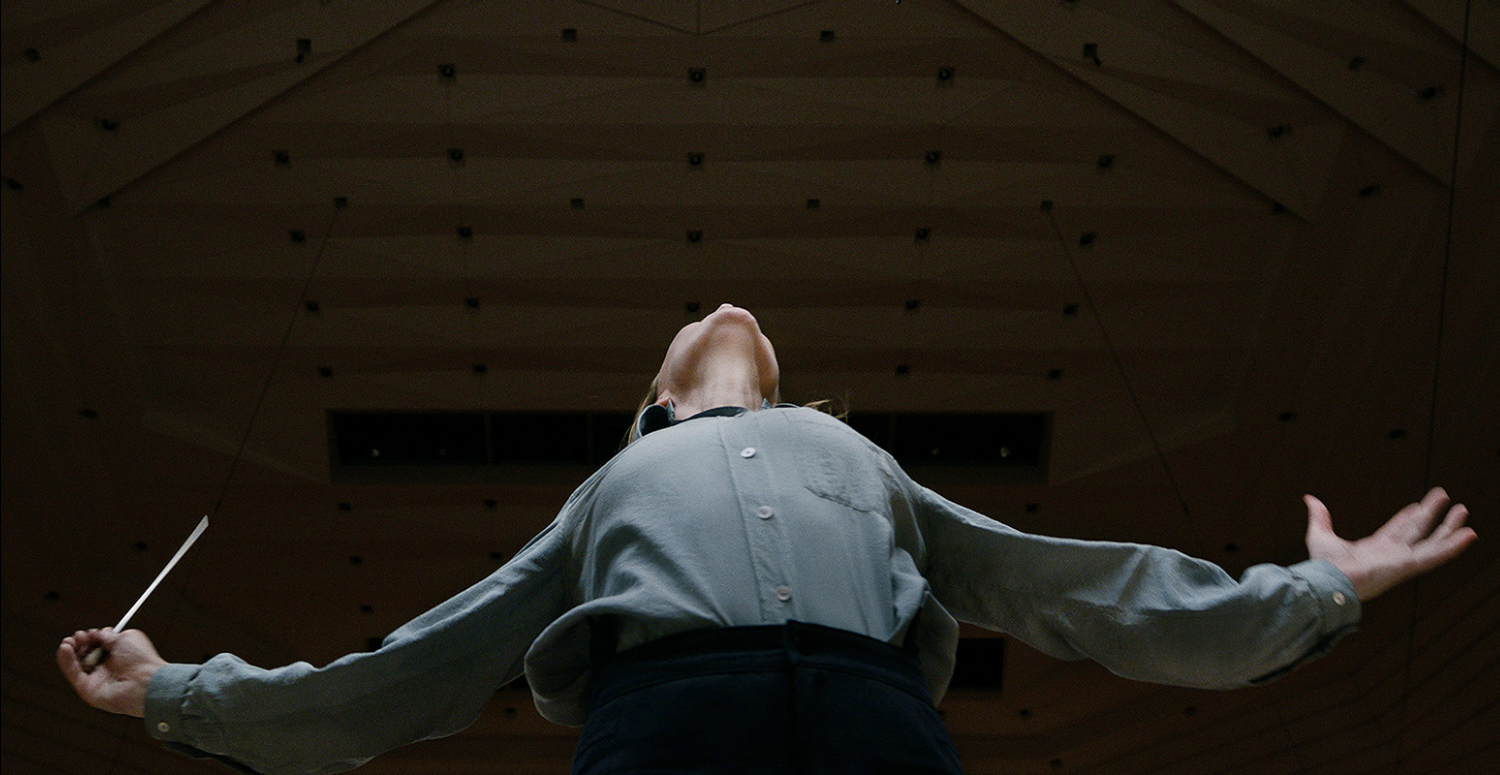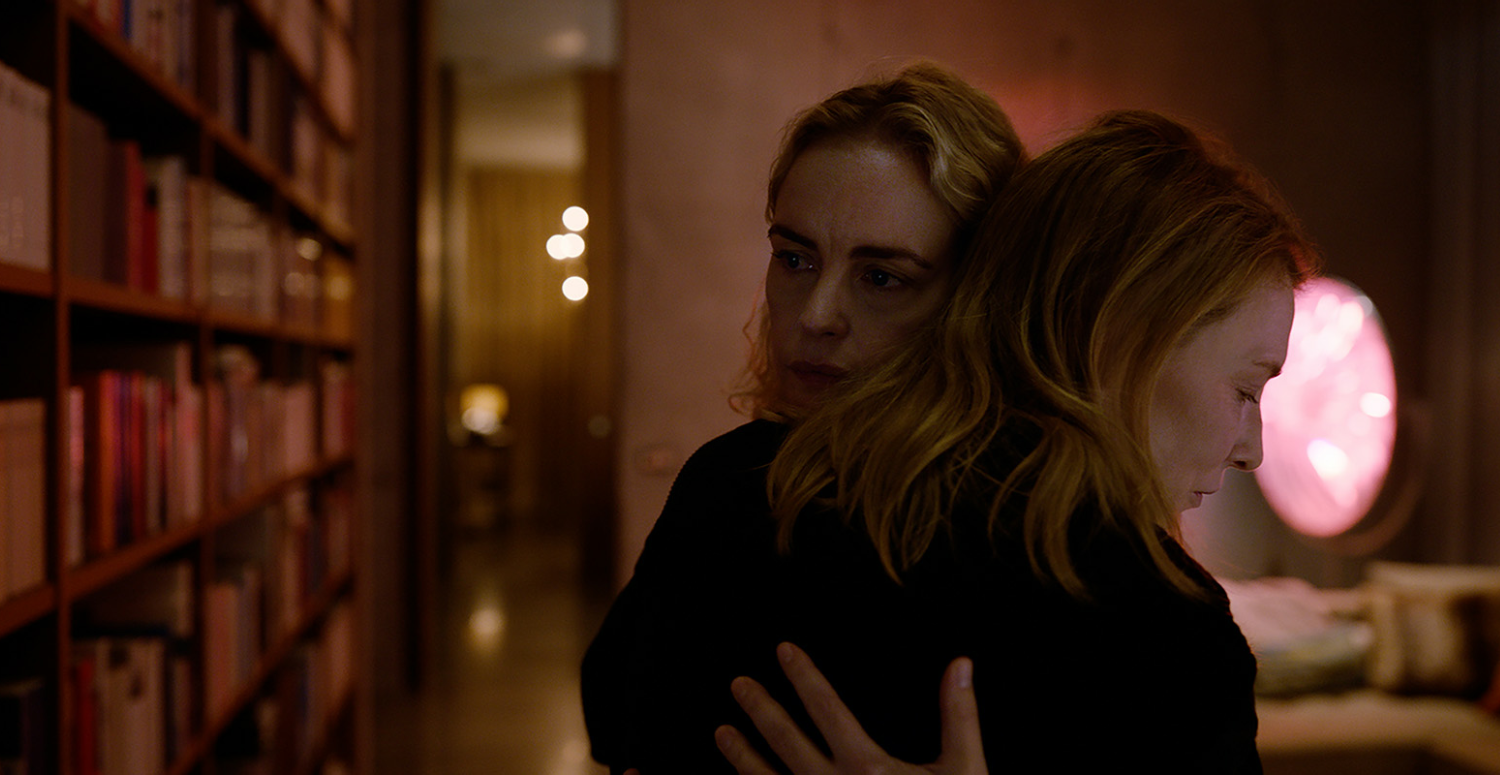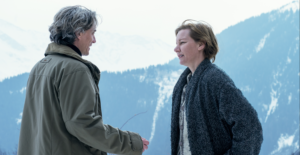Tár
Coupe Volpi (Actrice) – Venise
Best Actress – BAFTA
Best Actress (drama) – Golden Globes
Best Cinematography – Spirit
2022/2023

FR EN
“This will not be a reasonable film” – p.2 du script de Todd Field.
En effet « Tár » est déconcertant dès son introduction par un long générique de fin défilant à l’envers. C’est une œuvre qui nous laisse perplexe à la sortie, d’une part parce qu’elle s’achève avec plus de questions que de réponses et d’autre part pour toute l’ambiguïté dont elle fait preuve au cours de son intrigue symphonique de 157 minutes.
Favorite pour l’Oscar de la meilleure actrice cette année, Cate Blanchett impressionne une fois de plus par la précision de son interprétation, du jeu de son personnage sur scène lors de l’interview d’ouverture à son incroyable maîtrise de la langue allemande dans la vie quotidienne, et par la puissance de sa performance aussi bien dans les silences que les longues tirades où elle occupe tout l’espace aux côtés d’un remarquable casting secondaire de Nina Hoss à Noémie Merlant en passant par Mark Strong. Mais s’il est principalement vendu pour l’interprétation renversante de son actrice australienne qui lui a déjà valu un Golden Globe, un CCA et la coupe Volpi à la Mostra de Venise, « Tár » désarçonne surtout pour son impressionnant scénario plein d’ambivalences.
Todd Field livre avec son troisième film un examen complexe des dynamiques toxiques du pouvoir. Si son propos sonne juste et très contemporain, son intrigue n’est pas vouée à trancher mais laisse au spectateur un espace de réflexion, une histoire à décrypter. Il faut lire entre les lignes pour cerner ce labyrinthe qu’est « Tár », de la relation de Lydia avec son assistante, à celle avec la précédente, jusqu’à son nom de scène Lydia Tár qui n’est autre qu’une anagramme d’art et de rat. Le film maintient un étrange mystère tout du long entre puzzles, bruits sourds, disparitions et apparitions furtives d’un personnage caché comme un voile fantastique sur une intrigue réaliste ou une prémonition du destin de sa protagoniste.
Cette protagoniste est d’abord présentée par un long et élogieux CV dicté par un vrai journaliste avant que le film ne renverse progressivement notre point de vue, la basculant d’héroïne féminine à anti-héros universel. « Tár » est ainsi l’histoire du basculement d’un personnage autant dans sa vie que dans notre perception de ce dernier, ce n’est pas une simple histoire de chute d’une figure au sommet de sa gloire. C’est un portrait intimidant d’une femme talentueuse, cultivée, et calculatrice qui va perdre son tempo.

Chaque discussion apparaît alors comme un affrontement de puissance que Tár ne peut que gagner car derrière ses idées et argumentations très justes et efficaces, l’on décèle un monstre écrasant son public et contrôlant son entourage. Mais au cœur de ce protagoniste se trouve un paradoxe : si c’est une femme malsaine c’est aussi une grande artiste, elle est aussi douée qu’abusive. Sur le plan moral ou éthique, on ne peut que s’offenser devant son comportement mais sur un plan professionnel ou artistique, il est indéniable que ses choix apportent une réelle plus-value musicale. Ce n’est donc pas le produit final qui pose problème mais bien les intentions de sa créatrice et Tár se retrouve alors prise à son propre jeu tant elle martèle à son public de commencer par comprendre le compositeur pour comprendre sa musique.
La composition de Hildur Guðnadóttir (Joker) accompagne ce portrait singulier d’une femme cheffe d’orchestre pour qui la question du genre est un non-sujet et dont la vie est faite de raideur, d’austérité et d’opulence. La mise en scène reflète cette personnalité dans une palette de couleur fade voire glaçante entre le noir et le gris. Au-delà de quelques plans-séquence saisissants, le chef opérateur Florian Hoffmeister filme le scénario de Todd Field comme un documentaire et compose ses plans avec minutie laissant presque toujours une profondeur de champ, une ouverture vers une autre pièce, une porte ou une fenêtre.
Si la fin est frustrante de par la précipitation des événements, le long tunnel de tension et de doute qu’aura traversé le spectateur lui restera longtemps en mémoire. « Tár » est ainsi une œuvre qui nous interroge, nous trouble, et mérite très clairement d’être revue.
Raphaël Sallenave
« This will not be a reasonable film » – p.2 of Todd Field’s script.
Indeed, “Tár” is disconcerting from its very beginning with a long, backwards scrolling end credit. It is a film that leaves us puzzled at the end, partly because it ends with more questions than answers, and partly because of the ambiguity it displays in its 157-minute symphonic plot.
A favorite for this year’s Best Actress Oscar, Cate Blanchett once again impresses with the precision of her performance, from her character’s acting on stage during the opening interview to her incredible command of the German language in everyday life, and with the intensity of her delivery in both the silences and the long tirades where she takes up all the space alongside a remarkable supporting cast featuring Nina Hoss, Noémie Merlant and Mark Strong. But if it is primarily marketed for the stunning performance of its Australian actress, which has already earned her a Golden Globe, a CCA and the Volpi Cup at the Venice Film Festival, “Tár” is especially disarming for its impressive screenplay full of misunderstandings.
With his third film, Todd Field delivers a complex examination of the toxic dynamics of power. While his message rings true and is very contemporary, his plot is not intended to be conclusive, but leaves the audience a place to think, a story to decipher. You have to read between the lines to understand the maze that is “Tár”, from Lydia’s relationship with her assistant, to that with her previous one, right up to her stage name Lydia Tár, which is nothing more than an anagram of both art and rat. The film sustains a strange mystery throughout between puzzles, thuds, disappearances and sneak appearances of a hidden character as a ghostly veil over a realistic plot or a premonition of its protagonist’s fate.
This protagonist is first introduced by a long and flattering resume given by a real journalist before the film gradually reverses our point of view, flipping her from female heroine to universal anti-hero. “Tár” is thus the story of a character’s reversal both in her life and in our perception of her, it is not a straightforward story of the fall of a figure at the peak of her glory. It is a daunting portrayal of a talented, educated, and calculating woman who is about to lose her tempo/sense of rhythm.

Every conversation then becomes a power struggle that Tár can only win, because behind her very accurate and convincing ideas and arguments, we can see a monster crushing her audience and controlling her entourage. But at the heart of this protagonist is a paradox: if she is a nasty woman, she is also a great artist, she is as talented as she is abusive. On a moral or ethical level, one can only be offended by her behavior, but on a professional or artistic one, it is undeniable that her choices add real musical value. It is not the final product that poses a problem but the intentions of its author, and Tár finds herself caught at her own game as she reminds her audience to start by understanding the composer in order to understand his/her music.
The score by Hildur Guðnadóttir (Joker) complements this singular portrait of a female conductor for whom the question of gender is a non-issue and whose life is one of stiffness, austerity and opulence. The mise en scène reflects this personality in a bland and even chilling color palette between black and gray. Beyond some striking oner shots, cinematographer Florian Hoffmeister shoots Todd Field’s script like a documentary and carefully composes his shots, almost always allowing for a depth of focus, an opening to another room, a door or a window.
If the end is frustrating because of the haste of the events, the long corridor of tension and doubt that the spectator will have gone through will remain in mind for a long time. “Tár” is therefore a movie that questions us, confuses us, and clearly deserves to be seen again.
Raphaël Sallenave

